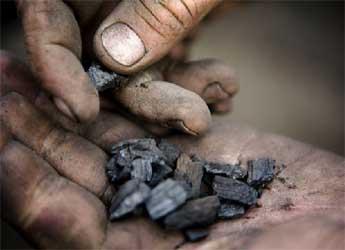Dr Richard Quilliam seminar

Dr Richard Quilliam, Biological and Environmental Sciences, University of Stirling, will give a seminar entitled "Biochar – part of the solution, or just another part of the problem?" at the James Hutton Institute in Dundee. It will be broadcast live to the Aberdeen site.
Abstract
Within the last decade several internationally leading environmental scientists have made claims that burying charcoal in the soil may represent, “the single most important initiative for humanity's environmental and agricultural future”. This has led to charcoal (‘biochar’) being branded as ‘the new green’, with tabloid hysteria claiming that scientists had now solved the climate change problem.
Biochar is produced from the pyrolysis of organic materials and when buried in soil can act as a long term recalcitrant source of soil organic carbon, i.e. remaining >500 years. Consequently, using biochar as a soil amendment for sequestering C is a powerfully simple tool to offset emissions associated with the burning of fossil fuels.
We have spent the last four years evaluating the potential of biochar to enhance C sequestration within agricultural lowlands, and quantified the effect of biochar application on the dynamics of native soil organic C and on nutrient cycling.
In addition, we have investigated the effects of repeated biochar applications to lowland soils, on crop growth, nutrient cycling and mycorrhizal colonisation, root-nodule N2 fixation and on the introduction and persistence of organic contaminants and heavy metals to agricultural soil.
While biochar application is unquestionably a strategy for the sequestration of C, the provisioning of other ecosystem services, for example, improved soil nutrient levels or crop performance, seem to be short lived. Our results emphasise the need for more long-term biochar field studies: as the addition of biochar to soil is effectively irreversible, it is crucial that we have a comprehensive understanding of how the properties of biochar positively or negatively affect soil quality, crop production and microbial communities.
Biography
Richard Quilliam is a newly appointed lecturer in Environmental Biology at the University of Stirling. His research interests fall into two inter-related areas: Biology and Ecology of Plant-Microbe Interactions and Environmental Pathogen Ecology. Much of this research is at the interface of agriculture and the environment and focuses on a number of sustainability and disease-related topics.
A central theme of his work is to understand the role of plant-microbe interactions (mycorrhizas, endophytes, pathogens, zoonoses) in ecosystem functioning and how this can be exploited in the context of sustainable agriculture and food security.
For the last couple of years he has been working on biochar application to agricultural soils as a strategy for both carbon sequestration and the provisioning of a range of ecosystem services.
More recently, his research has focussed on plant endophytic communities including root colonisation by dark septate endophytic fungi and the interactions between plants and zoonotic pathogens.
Before moving to Stirling last year, he was at Bangor University where he carried out postdoctoral research in applied Soil and Environmental Science, including mycorrhizal community dynamics, nutrient cycling in the rhizosphere, C sequestration in grassland ecosystems, and the epidemiology, carriage, survival and infectivity of E. coli O157 within rural communities.
He gained his PhD in Physiological Plant Pathology from the University of Sheffield, where he used a reverse-genetics approach to quantify the effect of cell wall invertases and altered carbohydrate metabolism on source-sink relations in response to wounding and biotrophic pathogen infection.





